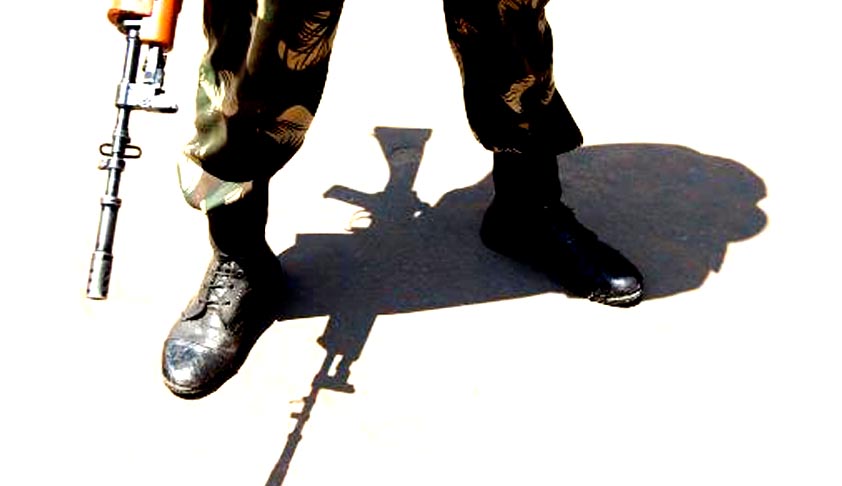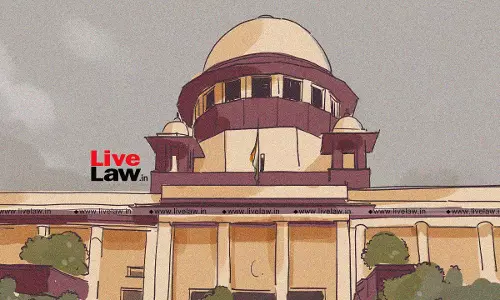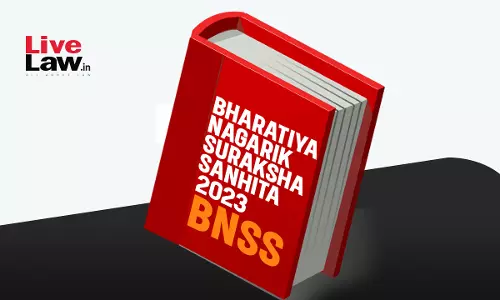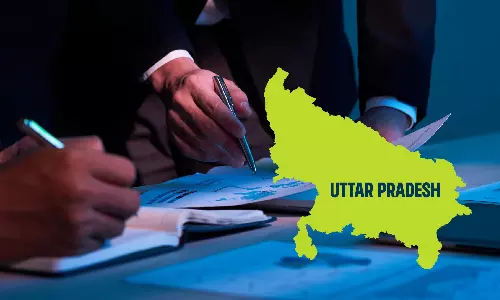
In an unprecedented incident(with an exception to Naxal Varghese murder case)in the history of Kerala,the land of democratic and political movements,in the last week,two persons (or three, as the number revealed by the police is still wavering)alleged to be Maoists were killed by the security forces in Nilamburas a sequel to the encounter killing of eight under-trial prisoners monikered to be...
In an unprecedented incident(with an exception to Naxal Varghese murder case)in the history of Kerala,the land of democratic and political movements,in the last week,two persons (or three, as the number revealed by the police is still wavering)alleged to be Maoists were killed by the security forces in Nilamburas a sequel to the encounter killing of eight under-trial prisoners monikered to be the members of another proscribed organization, the SIMI, that happened on October 31st in Bhopal.
The death of people in police action is often justified on the basis of their self-defence. Every time when police act in that way they very vaguely argue such a defence.In reality self-defence has nothing to do with most of the encounters and many of such incidents are either calculated ones or done in retaliation to the attacks against the force. Self-defence and retaliation are clearly distinguishable.The right of self-defence available to any person ends, mainly, when there is possibility to overpower the culprit without killing him. If the force does the act of killing the victim even after they get chance to overpower them it is beyond the right of self-defence. Police being a mighty force cannot always resort to the theory of self-defence especially when the opposite party is a minor group with fewer weapons. If the police fire the victim when there is chance to overpower them without killing it is retaliation. The Apex Court in Extra Judicial Execution Victim Families Association (EEVFAM) and Ors. Vs. Union of India (UOI) and Ors (AIR 2016 SC 3400) has succinctly stated that the right of self-defence or private defence falls in one basket and use of excessive force or retaliatory force falls in another basket. Therefore, while a victim of aggression has a right of private defence or self-defence (recognized by Sections 96 to 106 of the Indian Penal Code) if that victim exceeds the right of private defence or self-defence by using excessive force or retaliatory measures, he then becomes an aggressor and commits a punishable offence. Unfortunately occasionally, use of excessive force or retaliation leads to the death of the original aggressor. When the State uses such excessive or retaliatory force leading to death, it is referred to as an extra-judicial killing or an extra-judicial execution.In Darshan Singh Vs.State of Punjab and Anr. (AIR 2010 SC 1212), the Supreme Court has held that “when there is real apprehension that the aggressor might cause death or grievous hurt, in that event the right of private defence of the defender could even extend to causing of death. A mere reasonable apprehension is enough to put the right of self-defence into operation, but it is also settled position of law that a right of self-defence is only right to defend oneself and not to retaliate. It is not a right to take revenge.”
The EEVFAM case is a case relating to important and fundamental questions of human rights violations, wherein 1528 instances of alleged extra-judicial executions carried out by the police and security forces in Manipur were involved.
It is also clear, mostly, that these police high handedness happens as a vengeance that develops immediately after finding the victims (mostly persons accused of or supposedly involved in some offence). If an impartial investigation is conducted in to encounter cases, most of them, where the police claim self-defence, will turned out to be clear cases of either murder on account of retaliation by the forces or motivated cold blooded murder cases.
Another defence often raised by the police and security force is that such incidents are likely to be happened when the accused (the victim of encounter) tries to evade the arrest. This aspect is governed by section 46 (3) of the Cr PC. But this right of the police do not extend to causing death of a person unless he is accused of any offence punishable with death or imprisonment for life. If police do any such act in retaliation it is illegal. And as noted by the Supreme court in EEVFAM Case (supra) society and the courts obviously cannot and do not accept such a death caused by the State since it is destructive of the Rule of law and plainly unconstitutional.It was also observed by the Supreme Court in EEVFAM Case (supra) that“there is a qualitative difference between use of force in an operation and use of such deadly force that is akin to using a sledgehammer to kill a fly; one is an act of self-defence while the other is an act of retaliation.”It was said in Om Prakash and Ors. Vs. State of Jharkhand through the Secretary, Department of Home, Ranchi-1 and Anr. [(2012) 12 SCC 72] that ‘it is not the duty of the police officers to kill the accused merely because he is a dreaded criminal. Undoubtedly, the police have to arrest the accused and put them up for trial. This Court has repeatedly admonished trigger happy police personnel, who liquidate criminals and project the incident as an encounter. Such killings must be deprecated. They are not recognized as legal by our criminal justice administration system. They amount to State sponsored terrorism”.
Of course, there are instances of exchanging fire between the security forces and the militants disobeying the law. But incidents of so-called encounter that happen during the time of peace cannot be equated with such instances happening during the insurgencies. It is expected that the Govt. and the police will make no bones about such incidents before the public to make them known whether the same was really an encounter in all sense. As the Hon’ble Supreme Court observed in an interim judgement in EEVFAM case (supra) “it is necessary to know the truth so that the law is tempered with justice. The exercise for knowing the truth mandates ascertaining whether fake encounters or extra-judicial executions have taken place and if so, who are the perpetrators of the human rights violations and how can the next of kin be commiserated with and what further steps ought to be taken, if any.”
The Human Rights Commission has issued some guidelines in the matter of death during the course of a police action. D.O. letter No.4/7/2008-PRP&P dated 12th May, 2010 issued to the then Chief Minister of Andhra Pradesh contains some of such guidelines. In the guideline it was perfectly made clear, among other things, that whenever a specific complaint is made against the police alleging commission of a criminal act on their part, which makes out a cognisable case of culpable homicide, an FIR to this effect must be registered under appropriate sections of the I.P.C. Such case shall be investigated by State CBCID or any other specialised investigation agency. Prompt prosecution and disciplinary actions against the erring officers also a must. In Rohtash Kumar Vs. State of Haryana through the Home Secretary, Government of Haryana, Civil Secretariat, Chandigarh and Ors. (2013 CriLJ 1518), the disturbing fact observed by the Apex Courtwas that the police have refused to follow the guidelines dated 2/12/2003 issued by the National Human Rights Commission. The two crucial guidelines which have been completely ignored by the police are that the investigation into the encounter death must be done by an independent investigation agency and that whenever a complaint is made against the police making out a case of culpable homicide, an FIR must be registered.
The Supreme Court also, on the basis of the NHRC guidelines, has issued detailed guidelines in People's Union for Civil Liberties Vs. State of Maharashtra (2015 CriLJ 610) in the matter of killing in police actions. It is highly necessary to probe in to the fact whether the police followed these guidelines.
What is there in somebody being ‘Maoists’? India is a country where many thoughts and ideas had been evolved, several foreign ideas and systems of governance are accepted. Even democracy is not a domestic idea. In a democratic country people resort to cherish different ideologies, diverse political visions and dissimilar theologies for expressing their will and vision. No one has any special right to do away with others, not even of the people involved in subversive activities, except upon judicial actions. If Maoists are working in Kerala with an intention to undermine the Govt. established by law, it is the duty of the police and other intelligence agencies to pick them and bring to the justice; the lynch law is not the answer. The modern democratic system doesn’t accept it. “If the police had information that terrorists were gathering at a particular place and if they had surprised them and arrested them, the proper course for them was to deal with them according to law.”Administrative liquidation" was certainly not a course open to them.”[People's Union for Civil Liberties Vs Union of India and another(AIR 1997 SC 1203)]
In a number of cases, the Apex Court and several High Courts have made it clear that people holding a particular ideology, even very drastic political one, is not illegal, unless they resort to unlawful activities. In V. Venkataswara Reddy vs. State of W.B, (MANU/WB/1234/2012) the High court of Calcutta opined that the Maoists are to be considered as political prisoners, if they are arrested. Unless and until they instigatethe people with their ideology to indulge in subversive activities, they cannot even be prosecuted for holding that ideology. TheSupreme Court, in State of Kerala vs. Raneef (2011 Cri LJ 982), by agreeing with the conclusion of the US Supreme Court that those who join an organization but do not share its unlawful purpose and who do not participate in its unlawful activities surely pose no threat, held that, mere membership in an unlawful association is not an offence. This view was reiterated in Arup Bhuyan vs. State of Assam (AIR 2011 SC 957)and held that mere membership of in a banned organisation will not make a person a criminal unless he resorts to violence or incites people to violence or creates public disorder by violence or incitement to violence.
Once again the Supreme Court in Sri Indra Das vs. State of Assam (MANU/SC/0106/2011) held that since a Constitution guaranteeing the fundamental rights is there, a plain and literal meaning cannot be given to Section 3(5) of TADA or Section 10 of the UA (P) Act, which plainly penalises the membership in a banned association. The High court of Kerala also held in Shyam Balakrishnan Vs. State of Kerala and Ors. (2015 (2) KLT 927) that to be a Maoist sympathiser is not a crime and unless the police form a reasonable opinion that activities of a citizen are illegal, personal liberty of such a person cannot be curtailed on the ground that he is a Maoist.
The law of the land being the above, to the police in India, a person beinga Maoist is an offence. One cannot, of course, ignore that there is pertinent difference in between a person being a Maoist simplicitor and being a Maoist hiding in jungle by possessing weapons and disseminating their ideas among the people. That act, if at all proved, will not attract an offence punishable with death or imprisonment for life unless they do any act resulting in loss of human life or grievous injury to any person or causes significant damage to any property.
It is also not out of place to mention that the emergence of Maoism and such kinds of rebellious movements are not developed out of blue. There are reasons for it. The observations of the Supreme Court in Nandini Sundar and Ors.vs. State of Chhattisgarh (AIR 2011 SC 2839) are important in this context. Regarding the reasons and development Naxalism in the State of Chhattisgarh, and the way in which the State is dealing with the situation, the Supreme Court says:
“People do not take up arms, in an organized fashion, against the might of the State, or against fellow human beings without rhyme or reason. Guided by an instinct for survival, and according to Thomas Hobbes, a fear of lawlessness that is encoded in our collective conscience, we seek an order. However, when that order comes with the price of dehumanization, of manifest injustices of all forms perpetrated against the weak, the poor and the deprived, people revolt. That large tracts of the State of Chhattisgarh have been affected by Maoist activities is widely known. It has also been widely reported that the people living in those regions of Chhattisgarh have suffered grievously, on account of both the Maoist insurgency activities, and the counter insurgency unleashed by the State. The situation in Chhattisgarh is undoubtedly deeply distressing to any reasonable person. What was doubly dismaying to us was the repeated insistence, by the Respondents, that the only option for the State was to rule with an iron fist, establish a social order in which every person is to be treated as suspect, and any one speaking for human rights of citizens to be deemed as suspect, and a Maoist. In this bleak, and miasmic world view propounded by the Respondents in the instant case, historian Ramchandra Guha, noted academic Nandini Sunder, civil society leader Swami Agnivesh, and a former and well reputed bureaucrat, E.A.S. Sarma, were all to be treated as Maoists, or supporters of Maoists. We must state that we were aghast at the blindness to constitutional limitations of the State of Chhattisgarh, and some of its advocates, in claiming that any one who questions the conditions of inhumanity that are rampant in many parts of that state ought to necessarily be treated as Maoists, or their sympathizers, and yet in the same breath also claim that it needs the constitutional sanction, under our Constitution, to perpetrate its policies of ruthless violence against the people of Chhattisgarh to establish a Constitutional order.”
The Kerala incident of killing of the ‘Maoists’ may or may not be a real encounter. The people have the right to know what its real nature was. Mere registering a case against the slain persons and completing the procedure is not the remedy. FIR under appropriate sections of law is to be registered against the police officers involved in the ‘encounter’ and investigated thoroughly. It is learnt, of late, that the Crime Branch is asked to investigate it on the FIR registered by the police. It seems that the Kerala Police were not even ready to give an official press release respecting the incident on their website revealing the nature of FIR registered and against whom it stands etc. Also a Magisterial (Executive) enquiry is being ordered. It is relevant to note that the Supreme Court has observed in EEVFAM case (supra)that the Magisterial Enquiry is not given its due importance but in any event since it is an administrative enquiry (which is apparently conducted in a casual manner) and not a judicial enquiry, not much credence can be attached to the Magisterial Enquiry report. A judicial enquiry is highly preferable. Only a judicial officer can find out by analysing the complex questions of law and fact involved in the matter to see whether there was excess use of force beyond the scope of self-defence by the police. The police have to say before people what were the nature of cases pending against those victims died in the present encounter. Were those cases, if any, are offences punishable with death or imprisonment for life.If so, did the police record it in their diary in advance and were acting in order to arrest the victims or were the police trying to find out the ‘Maoists’ on getting the tip-off that they were hiding inside the forest. Revealing the information to the public is a must in a civil society. A complete comparison of weapons available with the police as well as the victim must be a matter of enquiry. This is necessary to unearth whether there was use of excessive force by the police. In order to see that the investigation is conducted properly, the monitoring of the superior courts is also possible by gaining support from Sushila Devi Vs. State of Rajasthan and Ors.(2014CriLJ64).If it is revealed through investigation that the security forces were acting in self-defence, they can definitely be exonerated and can be honoured. Otherwise, stern action against them is the need. In many of the proven cases of extra-judicial killings, it is seen, only some sort of monetary compensation is awarded to the relatives of the victims.That too, sometimes, is being given from the Govt. exchequer. This is a reason for increase of violations of law. If exemplary punishment to the erring officials is enforced, considering such killings as rarest of the rare cases, violations of law will be mitigated.
[The opinions expressed in this article are the personal opinions of the author. The facts and opinions appearing in the article do not reflect the views of LiveLaw and LiveLaw does not assume any responsibility or liability for the same]
This article has been made possible because of financial support from Independent and Public-Spirited Media Foundation.





